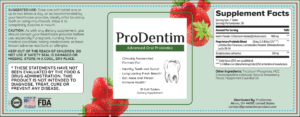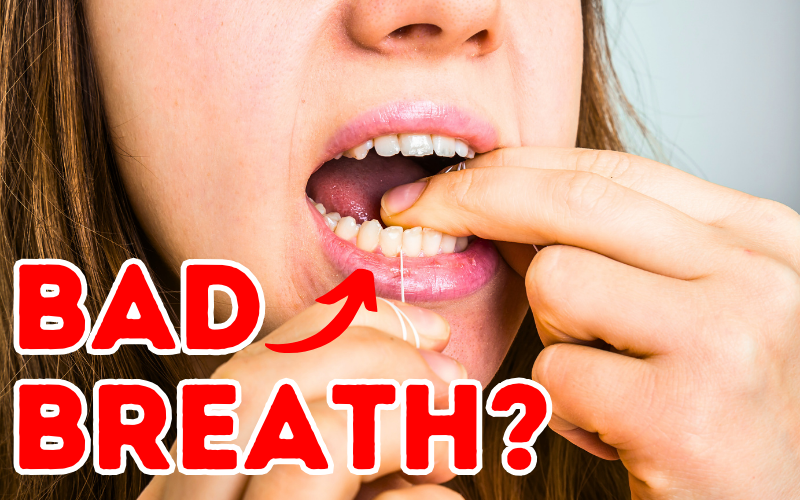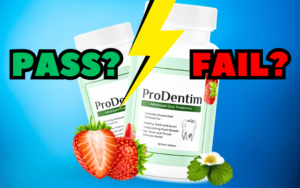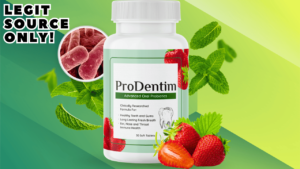Does flossing help bad breath? DO NOT start flossing without knowing the truth first. This question often arises when individuals seek effective solutions for addressing the common concern of halitosis, or bad breath. Understanding the role of oral care practices like flossing in addressing this issue is essential for achieving lasting freshness and maintaining overall oral health.

In this comprehensive guide, we will delve into the relationship between flossing and bad breath, exploring how flossing contributes to oral hygiene, its preventive role, and its place in a holistic oral care routine. Whether you’re seeking answers to questions about the efficacy of flossing or looking for practical tips to combat bad breath, this guide has you covered.
Join us on this educational journey as we unravel the connection between flossing and bad breath, dispel myths, and provide you with valuable insights for fresher, more confident smiles.
While we’re on the topic of oral hygiene, you may also want to checkout out article about weight loss.
The Role of Flossing in Oral Health
Before we explore the specific relationship between flossing and bad breath, it’s essential to establish the importance of flossing in maintaining optimal oral health. Dental professionals universally emphasize the significance of incorporating flossing into your daily dental care routine, alongside brushing and regular dental check-ups. Flossing targets areas that a toothbrush may not reach, effectively removing food particles and plaque between teeth and along the gumline.

In this article, we will address the following key questions:
-
- What is the link between flossing and bad breath?
-
- How does flossing contribute to improved oral hygiene?
-
- Can flossing alone help combat bad breath, or is it a part of a more comprehensive approach?
To provide you with evidence-based insights, we will examine the role of flossing in reducing the factors that contribute to bad breath, including plaque buildup, food particles, and bacterial growth. Additionally, we will share practical tips on proper flossing techniques and how to make flossing a consistent part of your oral care regimen.
So, let’s begin our journey of exploration, uncovering the connection between flossing and bad breath, and arming you with the knowledge needed for a fresher, more confident smile.
Understanding Bad Breath
The Impact of Bad Breath: Does Flossing Help Bad Breath?
Before delving into the specifics of does flossing help bad breath, let’s first gain a clear understanding of what bad breath, or halitosis, entails.
What Is Bad Breath?
Bad breath, or halitosis, is a condition characterized by unpleasant odors originating from the oral cavity. does flossing help bad breath? These odors can stem from various sources within the mouth, and their causes may vary from person to person.
Common Causes of Bad Breath
To comprehend the link between flossing and bad breath, does flossing help bad breath, it’s essential to be aware of the common causes of this condition:
-
- Bacterial Growth: The mouth harbors numerous bacteria, some of which can produce sulfur compounds responsible for foul odors.
-
- Food Particles: Food particles trapped between teeth or in dental crevices can break down over time, leading to odorous byproducts.
-
- Plaque and Tartar: Accumulation of plaque (a soft, sticky film of bacteria) and tartar (hardened plaque) can foster bacterial growth and contribute to bad breath.
-
- Dry Mouth: Inadequate saliva production, often due to factors like medication or medical conditions, can result in dry mouth, allowing bacteria to thrive.
-
- Dietary Habits: Consuming certain foods, such as garlic or onions, can introduce odor-causing compounds into the bloodstream, affecting breath.
The Social and Psychological Impact
Bad breath can have more than just a physical impact; it can affect one’s social interactions and self-esteem. Does flossing help bad breath? is always the question. Individuals experiencing bad breath may feel self-conscious about talking or being in close proximity to others. This can hinder social and professional relationships.

Moreover, the psychological does flossing help bad breath question impact of bad breath can lead to anxiety and stress, which, in turn, can exacerbate the problem. Understanding the consequences of bad breath underscores the importance of addressing and managing it effectively. We always ask does flossing help bad breath?
In the following sections, we will explore the role of flossing in reducing the factors that contribute to bad breath. By addressing these underlying causes, individuals can regain confidence in their oral hygiene and social interactions.
The Importance of Oral Hygiene

Maintaining Optimal Oral Health: Does Flossing Help Bad Breath?
To comprehensively address the question of whether flossing helps combat bad breath, it is crucial to emphasize the overarching significance of oral hygiene. Good oral hygiene is the foundation of a healthy mouth, and it plays a pivotal role in mitigating bad breath. It does answer the question does flossing help bad breath, but there is more to the story.
The Role of Daily Dental Care
Daily dental care routines, which include brushing, flossing, and rinsing, are vital components of maintaining optimal oral health. Asking the question does flossing help bad breath and focusing on each of these aspects contributes to a clean and odor-free mouth.

Flossing in the Oral Hygiene Regimen
While brushing is effective at cleaning the surfaces of the teeth and the tongue, it may not adequately answer does flossing help bad breath but it can reach the areas between teeth and along the gumline where plaque and food particles tend to accumulate. This is where flossing comes into play.
Why Flossing Matters
Flossing is specifically designed to access these hard-to-reach areas, making it an indispensable part of your oral hygiene routine. By using dental floss daily, you can. This could answer the question. does flossing help bad breath?
-
- Remove Food Particles: Flossing helps dislodge food particles trapped between teeth, preventing them from decomposing and causing bad breath.
-
- Reduce Plaque Buildup: Plaque, a soft film of bacteria, can quickly accumulate in areas untouched by a toothbrush. Flossing effectively removes this bacterial film, reducing the risk of bacterial odors.
-
- Stimulate Gums: Flossing also stimulates the gums, promoting healthy circulation and reducing the risk of gum-related odor issues.
-
- Complement Brushing: Flossing complements brushing by providing comprehensive oral cleaning, ensuring that no area is left unattended.
The Holistic Approach to Oral Hygiene
In our pursuit of understanding the question does flossing help bad breath and connection between flossing and bad breath, it’s essential to view oral hygiene holistically. While flossing is a critical component, it should be integrated into a broader oral care regimen that includes brushing, tongue cleaning, and mouthwash use.
The next sections of this article will delve deeper into how flossing addresses the specific factors that contribute to bad breath, emphasizing its role in combating oral odor effectively.
The Basics of Flossing: Does flossing help bad breath?
What Is Dental Floss?
Before delving into the specifics of does flossing helps bad breath and how flossing can aid in addressing bad breath, it’s essential to understand the basics of dental floss. Dental floss is a thin, flexible strand designed for use between teeth to remove food particles, plaque, and debris that a toothbrush may not reach.

Types of Dental Floss
Dental floss comes in various forms, including:
-
- Nylon Floss: This traditional floss is available in both waxed and unwaxed varieties.
-
- PTFE Floss: Made of monofilament, PTFE (polytetrafluoroethylene) floss slides easily between teeth and is shred-resistant.
-
- Dental Tape: Wider and flatter than traditional floss, dental tape is ideal for individuals with more extensive spaces between teeth.
-
- Floss Picks: These are pre-threaded flossing tools with a handle for convenient use.
How to Use Dental Floss
Proper flossing technique is crucial for its effectiveness in maintaining good oral hygiene and combating bad breath. But the question remains, does flossing help bad breath? Here’s a step-by-step guide:
-
- Start with Enough Floss: Begin with an 18-inch piece of dental floss, winding most of it around your middle fingers, leaving about two inches for flossing.
-
- Hold the Floss Securely: Hold the floss between your thumb and index fingers, leaving about one inch of floss to work with.
-
- Gently Glide Between Teeth: Slide the floss gently between your teeth using a back-and-forth motion.
-
- Curve Around Each Tooth: Form a C-shape with the floss as you curve it around each tooth, reaching just below the gumline.
-
- Clean the Sides: Carefully clean the sides of each tooth by moving the floss up and down.
-
- Use a Fresh Section: As you move to the next tooth, unwind a fresh section of floss to avoid transferring debris.
-
- Repeat for Each Tooth: Continue this process for each tooth, including the back teeth and behind the molars.
Flossing Frequency: Does flossing help bad breath relative to frequency?
For optimal results in combating bad breath and maintaining oral health, it’s recommended to floss at least once a day. Consistency in your flossing routine is key to preventing the accumulation of plaque and food particles that can contribute to unpleasant odors.
In the following sections, we will explore the specific ways in which flossing addresses these oral hygiene concerns and its role in minimizing bad breath.
Flossing Technique
Mastering Proper Flossing
To harness the full potential of flossing and answer does flossing help bad breath, it’s essential to employ the correct flossing technique. A proper flossing technique ensures that you effectively remove food particles, plaque, and bacteria from the interdental spaces between your teeth.
Step-by-Step Flossing Guide
-
- Prepare the Floss: Begin by taking an 18-inch piece of dental floss and winding it around your middle fingers, leaving about two inches for flossing.
-
- Secure the Floss: Hold the floss firmly between your thumb and index fingers, leaving about one inch of floss to work with.
-
- Glide Between Teeth: Gently slide the floss between your teeth using a back-and-forth motion. Be cautious not to snap or force the floss, which can injure your gums.
-
- Form a C-Shape: As the floss reaches the gumline, curve it into a C-shape around one of the teeth. Slide it slightly below the gumline without causing discomfort.
-
- Clean the Sides: Carefully clean the sides of the tooth by moving the floss up and down. Ensure that you reach the entire surface of each tooth.
-
- Unwind Fresh Floss: As you move on to the next tooth, unwind a fresh section of floss to prevent the transfer of debris.
-
- Repeat for Each Tooth: Continue this process for all teeth, including the back teeth and areas between molars.
-
- Rinse and Dispose: After flossing, rinse your mouth with water to remove dislodged particles. Dispose of the used floss properly.
Flossing Tips for Effectiveness – This can help with the common question, does flossing help bad breath?
-
- Take Your Time: Don’t rush through the flossing process. Give each tooth adequate attention.
-
- Use the Right Amount of Pressure: Apply gentle but firm pressure to avoid damaging gums while effectively cleaning between teeth.
-
- Be Consistent: Make flossing a daily habit to prevent the buildup of plaque and food particles that can lead to bad breath.
-
- Consider Flossing Aids: If you find traditional floss challenging to use, consider floss picks, interdental brushes, or water flossers as alternative options.
Proper flossing not only contributes to fresher breath but also supports overall oral health by preventing gum disease and cavities. In the subsequent sections, we will explore does flossing help bad breath, how flossing addresses specific causes of bad breath and its role in maintaining oral hygiene.
How Plaque Contributes to Bad Breath
The Role of Plaque in Oral Odor
To understand the effectiveness of flossing in addressing bad breath, it’s crucial to grasp how plaque buildup can contribute to oral malodor. Plaque is a sticky, colorless film of bacteria that constantly forms on the surfaces of teeth. While some of these bacteria are harmless, others produce sulfur compounds, which are responsible for the unpleasant odors associated with bad breath.
Plaque Accumulation and Bacterial Activity
Plaque accumulation occurs when bacteria in the mouth feed on sugars and starches from the food we consume. In the process, they release acidic byproducts that can erode tooth enamel and produce foul-smelling sulfur compounds, including hydrogen sulfide and methyl mercaptan.
Areas Where Plaque Thrives
Plaque tends to accumulate in areas that are difficult to reach with a toothbrush alone, such as between teeth and along the gumline. Over time, if not effectively removed, plaque can mineralize and harden into tartar (dental calculus), which exacerbates the problem.
Flossing’s Role in Plaque Removal
Flossing is a highly effective tool in the battle against plaque buildup and the subsequent development of bad breath. Here’s how flossing combats plaque:
-
- Interdental Cleaning: Flossing reaches the spaces between teeth and along the gumline, where plaque often accumulates.
-
- Plaque Dislodgment: By gently sliding the floss between teeth and curving it around each tooth, you can dislodge and remove plaque.
-
- Preventing Tartar Formation: Regular flossing helps prevent the buildup of plaque to the point where it hardens into tartar, which is more challenging to remove.
-
- Bacterial Control: Removing plaque reduces the population of odor-causing bacteria in the mouth, contributing to fresher breath.
Combining Flossing with Brushing
While flossing is highly effective in plaque removal, it is most impactful when combined with regular brushing. Brushing your teeth twice daily with fluoride toothpaste helps remove surface plaque and maintain oral hygiene, while flossing targets the areas between teeth and along the gumline.
In the following sections, we will explore does flossing help bad breath, additional ways in which flossing can help combat bad breath and maintain a healthy mouth.
Flossing to Remove Food Particles
The Impact of Food Residue
Food particles trapped between teeth can not only be uncomfortable but also contribute significantly to bad breath. As these particles break down over time, they become a breeding ground for bacteria, leading to the release of odorous byproducts.
Common Culprits
Various types of foods, especially those high in sugars and carbohydrates, are prone to leaving residue between teeth. Examples include:
-
- Meats
-
- Leafy Greens
-
- Seeds
-
- Popcorn
-
- Starchy Foods
Flossing as a Food Particle Remover
One of the primary roles of flossing in combating bad breath is its ability to dislodge and remove food particles from between teeth. Here’s how flossing addresses this concern:
-
- Precise Cleaning: Floss is designed to access tight spaces, ensuring that even the smallest food particles are removed.
-
- Preventing Decomposition: By removing trapped food, flossing prevents the decomposition of food particles, which can emit unpleasant odors.
-
- Reducing Bacterial Growth: Fewer food particles mean fewer opportunities for bacteria to thrive and produce odor-causing compounds.
-
- Enhancing Freshness: Flossing enhances the overall freshness of your mouth by eliminating the potential sources of bad breath.
Proper Technique for Food Particle Removal
To effectively use floss for removing food particles:
-
- Begin with Clean Hands: Wash your hands before flossing to ensure cleanliness.
-
- Wind the Floss: Take an 18-inch piece of floss and wind it around your fingers as previously described.
-
- Slide and Clean: Gently slide the floss between teeth, curving it around each tooth as you go. Pay special attention to areas where you suspect food particles may be trapped.
-
- Dispose: Dispose of the used floss in a waste bin.
By incorporating flossing into your daily oral hygiene routine, you can significantly reduce the presence of food particles between teeth and enjoy fresher breath as a result.
In the upcoming sections, we will continue to explore how flossing contributes to better oral hygiene and addresses the factors that lead to bad breath.
Flossing to Reduce Bacterial Growth
The Role of Bacteria in Bad Breath
Understanding the connection between bacteria and bad breath is essential in addressing oral malodor. The mouth is home to numerous types of bacteria, some of which can produce foul-smelling compounds, leading to unpleasant breath.
Bacterial Activity
Bacteria in the oral cavity feed on remnants of food, particularly sugars and starches. As they digest these particles, they release acidic byproducts and sulfur compounds, contributing to the development of bad breath.
Bacterial Hideaways
Bacteria tend to thrive in areas that are less accessible to toothbrushes, such as the spaces between teeth and along the gumline. This is where flossing plays a crucial role.
Flossing’s Impact on Bacterial Reduction
Flossing is a powerful tool for reducing bacterial growth and preventing the production of odor-causing compounds. Here’s how it achieves this:
-
- Bacterial Removal: Flossing reaches between teeth and along the gumline, effectively removing bacteria-rich plaque.
-
- Food Particle Elimination: By dislodging and eliminating food particles, flossing reduces the bacterial food source.
-
- Preventing Bacterial Colonization: Regular flossing disrupts the conditions that allow bacteria to colonize and multiply.
-
- Minimizing Sulfur Compound Production: Fewer bacteria mean fewer sulfur compounds produced, resulting in fresher breath.
Making Flossing a Habit

To harness the benefits of flossing in reducing bacterial growth and addressing bad breath:
-
- Commit to Daily Flossing: Flossing should be a daily habit to maintain bacterial control.
-
- Use Proper Technique: Follow the recommended flossing technique to ensure thorough removal of bacteria and food particles.
-
- Combine with Brushing: Pair flossing with regular brushing to comprehensively address oral hygiene.
By reducing bacterial growth through consistent flossing, individuals can significantly improve their breath freshness and overall oral health.
In the subsequent sections, we will delve deeper into does flossing help bad breath, the relationship between flossing and bad breath, exploring additional aspects of their connection.
Flossing and Gum Health
The Connection Between Gums and Bad Breath

Gum health plays a pivotal role in maintaining fresh breath. When gums are unhealthy, they can become a breeding ground for odor-causing bacteria, exacerbating bad breath issues.
Gum Disease and Bad Breath
Gum disease, also known as periodontal disease, is a common condition characterized by inflammation and infection of the gums. This condition is closely linked to bad breath due to the presence of harmful bacteria.
Flossing’s Influence on Gum Health
Flossing is a crucial component of maintaining gum health, and here’s why it’s essential:
-
- Plaque Removal: Flossing effectively removes plaque from between teeth and along the gumline, preventing gum disease.
-
- Reducing Inflammation: Gum disease often involves gum inflammation. By removing plaque, flossing helps reduce this inflammation and associated bad breath.
-
- Preventing Gum Infections: Flossing reduces the risk of gum infections that can contribute to foul odors.
-
- Enhancing Gum Circulation: The act of flossing also stimulates gum circulation, promoting overall gum health.
The Holistic Approach

Addressing bad breath requires a holistic approach that includes gum health. Flossing, in conjunction with regular brushing and dental check-ups, forms the foundation of a comprehensive oral care regimen.
By making flossing a daily practice and paying attention to gum health, individuals can effectively combat bad breath at its source.
In the upcoming sections, we will continue to explore does flossing help bad breath, the multifaceted relationship between flossing and bad breath, covering various aspects of oral hygiene.
Flossing and Tongue Cleaning
The Significance of a Clean Tongue
An often-overlooked aspect of oral hygiene in relation to bad breath is the cleanliness of the tongue. The tongue’s surface can harbor bacteria, food particles, and dead cells, which can contribute to the development of unpleasant odors.
Tongue Coating and Bad Breath
A coated tongue, characterized by a buildup of debris on its surface, is a common source of oral malodor. Bacteria residing on the tongue can produce sulfur compounds that lead to bad breath.
How Flossing Complements Tongue Cleaning
While flossing primarily targets the spaces between teeth, it indirectly supports tongue cleaning and fresher breath in the following ways:
-
- Overall Oral Cleanliness: Flossing, as part of a complete oral hygiene routine, helps maintain a cleaner overall mouth, including the tongue.
-
- Reducing Bacterial Load: By removing plaque and food particles from between teeth, flossing reduces the bacterial load in the mouth, which can also benefit the tongue.
-
- Preventing Odor Formation: Fewer bacteria and reduced debris in the mouth lead to decreased odor formation on the tongue.
Incorporating Tongue Cleaning
To enhance the benefits of flossing in addressing bad breath, individuals can consider incorporating tongue cleaning into their daily oral care routine. Using a tongue scraper or gently brushing the tongue with a toothbrush can help remove debris and bacteria, further contributing to fresher breath.
In the following sections, we will continue to explore does flossing help bad breath, how various aspects of oral hygiene, including flossing, collectively play a crucial role in combating bad breath.
Flossing and Saliva Production
The Role of Saliva in Oral Health
Saliva is a natural body fluid often referred to as “nature’s mouthwash.” It plays a vital role in maintaining oral health by helping to cleanse the mouth, neutralize acids, and prevent the growth of harmful bacteria. Saliva also assists in breaking down food particles and aids in the swallowing process.
Saliva and Bad Breath
Insufficient saliva production, known as dry mouth or xerostomia, can contribute to bad breath. When there is not enough saliva to wash away food debris and neutralize acids, bacteria can proliferate, leading to malodor.
Flossing to Support Saliva Production
Flossing, when integrated into a comprehensive oral hygiene routine, supports saliva production in several ways:
-
- Oral Stimulation: The act of flossing stimulates the gums and oral tissues, encouraging the natural production of saliva.
-
- Reducing Bacterial Load: By removing plaque and food particles, flossing helps maintain a healthier oral environment, allowing saliva to function more effectively.
-
- Enhancing Hydration: Staying adequately hydrated is essential for saliva production. Flossing encourages individuals to drink more water, supporting overall hydration.
Promoting Saliva Production
To maximize the benefits of flossing in relation to saliva production and combating bad breath, consider the following:
-
- Stay Hydrated: Drink plenty of water throughout the day to support saliva production.
-
- Chew Sugarless Gum: Chewing sugarless gum can also stimulate saliva flow and help maintain oral freshness.
-
- Consult a Healthcare Provider: If dry mouth persists, consult a healthcare provider for guidance on addressing the underlying causes.
In the upcoming sections, we will delve deeper into does flossing help bad breath, the multifaceted relationship between flossing and bad breath, exploring additional aspects of oral hygiene.
Flossing as a Preventative Measure
The Preventative Role of Flossing
In the quest to combat bad breath, prevention is often more effective than addressing the issue once it arises. Flossing serves as a vital preventative measure in maintaining oral hygiene and freshness.
Addressing the Root Causes
Bad breath, or halitosis, is typically caused by factors such as bacteria, food particles, and plaque buildup in the mouth. Flossing directly addresses these root causes, preventing them from developing into significant issues.
Daily Flossing for Long-Term Benefits
Flossing as a preventative measure offers several long-term benefits for oral health:
-
- Plaque and Bacteria Control: Daily flossing controls plaque and bacterial growth, reducing the likelihood of malodor.
-
- Food Particle Removal: Flossing removes food particles from between teeth, preventing their decomposition and odor formation.
-
- Gum Health Maintenance: By preventing gum disease, flossing supports overall gum health, which is closely linked to bad breath.
-
- Consistent Freshness: Maintaining a daily flossing routine ensures consistent oral freshness and confidence.
Incorporating Flossing into Daily Life
To harness the preventative power of flossing:
-
- Commit to Daily Flossing: Make flossing a daily habit, preferably after meals or before bedtime.
-
- Proper Technique: Use the correct flossing technique to ensure effective plaque and debris removal.
-
- Regular Dental Check-Ups: Combine flossing with regular dental check-ups for a comprehensive oral care regimen.
By incorporating flossing into your daily oral hygiene routine, you take a proactive stance against bad breath, addressing its root causes and enjoying long-term oral freshness.
In the subsequent sections, we will continue to explore does flossing help bad breath, various aspects of flossing and its role in combating bad breath.
Flossing and Overall Oral Hygiene
The Comprehensive Approach to Oral Health
Maintaining good oral hygiene is paramount to answer does flossing help bad breath, not only for fresh breath but also for overall health. Flossing is an integral part of this comprehensive approach.
Oral Health and Systemic Health
Oral health is intricately connected to systemic health. Poor oral hygiene can lead to various health issues, including cardiovascular problems, diabetes, and respiratory infections. Fresh breath is just one aspect of this interconnected system.
Flossing’s Role in Oral Health
Flossing contributes to overall oral hygiene in several ways:
-
- Plaque and Bacterial Control: Flossing removes plaque and bacteria from between teeth, reducing the risk of gum disease and bad breath.
-
- Gum Disease Prevention: By preventing gum disease, flossing safeguards your gums and contributes to better oral health.
-
- Preventing Tooth Decay: Flossing helps prevent tooth decay by eliminating the food particles that bacteria feed on.
-
- Systemic Health Benefits: Good oral hygiene, including flossing, can have positive effects on systemic health, emphasizing the importance of a comprehensive approach.
A Holistic Approach to Fresh Breath
To maintain overall oral hygiene and achieve lasting fresh breath:
-
- Combine Flossing and Brushing: Regularly floss in conjunction with brushing to comprehensively clean your mouth.
-
- Routine Dental Check-Ups: Schedule regular dental check-ups to address any emerging issues promptly.
-
- Healthy Lifestyle Choices: Maintain a balanced diet, stay hydrated, and avoid tobacco to support your oral and overall health.
By integrating flossing into your daily oral care routine and adopting a holistic approach to oral hygiene, you not only combat bad breath but also contribute to your overall well-being.
In the following sections, we will continue to explore the multifaceted relationship between flossing, does flossing help bad breath, covering various aspects of oral hygiene.
Flossing in a Comprehensive Oral Care Routine
The Importance of a Complete Oral Care Routine
Achieving and maintaining fresh breath requires a comprehensive oral care routine that goes beyond brushing alone. Flossing plays a crucial role in this comprehensive approach to oral hygiene. But does flossing help bad breath?
Oral Care Beyond Brushing
While brushing is essential for cleaning the surfaces of your teeth, it often cannot reach the spaces between teeth and along the gumline where bacteria thrive. This is where flossing comes into play.
Flossing’s Position in the Routine
To effectively combat bad breath and maintain optimal oral hygiene, consider the following:
-
- Brushing: Brush your teeth at least twice a day using fluoride toothpaste. Brush for at least two minutes, ensuring all surfaces are covered.
-
- Flossing: Floss daily to remove plaque and debris from between teeth and along the gumline.
-
- Rinsing: Use an antimicrobial mouthwash to further reduce bacteria and freshen breath.
-
- Tongue Cleaning: Clean your tongue regularly to remove odor-causing bacteria.
-
- Regular Dental Visits: Schedule dental check-ups and cleanings at least twice a year to address any underlying issues.
The Synergy of a Complete Routine
A comprehensive oral care routine synergizes the benefits of each step, resulting in:
-
- Effective plaque and bacteria control
-
- Reduced risk of gum disease
-
- Prevention of tooth decay
-
- Consistent fresh breath
-
- Overall oral and systemic health support
By integrating flossing into your daily oral care routine, you contribute significantly to fresher breath and long-term oral health.
In the upcoming sections, we will continue to explore does flossing help bad breath, various aspects of flossing and its role in combating bad breath.
Additional Tips for Fresh Breath
Beyond Flossing: Enhancing Freshness
While flossing is a key component of maintaining fresh breath, there are additional tips and practices that can further enhance oral hygiene and freshness.
Holistic Oral Care
A holistic approach to oral care includes the following practices:
1. Proper Brushing Technique
Brush your teeth for at least two minutes using fluoride toothpaste. Brush all surfaces, including the front, back, and chewing surfaces of your teeth. Don’t forget to gently brush your tongue to remove bacteria.
2. Regular Tongue Cleaning
Use a tongue scraper or your toothbrush to clean your tongue regularly. This helps remove bacteria and debris that can contribute to bad breath.
3. Stay Hydrated
Drinking an adequate amount of water throughout the day helps maintain saliva production, which is essential for fresh breath.
4. Avoid Tobacco
Tobacco products, including smoking and chewing tobacco, can lead to bad breath. Quitting these habits can significantly improve oral freshness.
5. Balanced Diet
Consume a balanced diet rich in fruits and vegetables. Avoid excessive consumption of sugary or acidic foods, as they can contribute to tooth decay and bad breath.
6. Regular Dental Check-Ups
Schedule regular dental check-ups at least twice a year. Your dentist can detect and address any underlying oral health issues that may be causing bad breath.
7. Antimicrobial Mouthwash
Use an antimicrobial mouthwash as part of your oral care routine. It can help reduce bacteria in your mouth and leave your breath feeling fresh.
8. Limit Alcohol and Coffee
Alcoholic beverages and coffee can contribute to dry mouth, which can lead to bad breath. Consume these beverages in moderation.
9. Sugarless Gum
Chewing sugarless gum can stimulate saliva production and help maintain oral freshness between meals.
By incorporating these additional tips into your oral care routine along with regular flossing, you can effectively combat bad breath and enjoy lasting freshness.
In the final section, we will summarize the key takeaways of this does flossing help bad breath article, comprehensive guide on flossing and its role in addressing bad breath.
Summary: The Role of Flossing in Fresh Breath
Flossing’s Crucial Contribution
In this comprehensive guide, we’ve explored the significance of flossing in addressing bad breath. Flossing is not only an effective means of removing plaque and debris from between teeth but also a crucial component of a holistic oral care routine.
Key Takeaways
Let’s recap the key takeaways:
1. Plaque and Bacterial Control
Flossing helps control plaque buildup and reduces the bacterial load in your mouth, addressing one of the root causes of bad breath.
2. Gum Health Maintenance
By preventing gum disease, flossing supports overall gum health, which is closely linked to fresh breath.
3. Food Particle Removal
Regular flossing eliminates food particles from between teeth, preventing their decomposition and odor formation.
4. Synergy in Oral Care
Flossing complements brushing, rinsing, tongue cleaning, and regular dental check-ups to create a comprehensive oral care routine.
5. Holistic Approach
Maintaining fresh breath is not just about flossing; it’s about adopting a holistic approach to oral care, including proper brushing, tongue cleaning, hydration, and a balanced diet.
6. Regular Dental Check-Ups
Schedule dental check-ups at least twice a year to address any emerging issues that may contribute to bad breath.
7. Additional Tips
Incorporate additional tips such as staying hydrated, avoiding tobacco, and using antimicrobial mouthwash to enhance your oral hygiene.
By consistently integrating flossing into your daily oral care routine and adopting these practices, you can effectively combat bad breath and enjoy the confidence that comes with lasting oral freshness.
In conclusion, flossing is not only an essential tool in maintaining fresh breath but also a cornerstone of overall oral health. By understanding does flossing help bad breath, its role and implementing it alongside other oral care practices, you can achieve and sustain the benefits of a healthy, confident smile and answer the eternal question: Does flossing help bad breath?










Pingback: ProDentim Review: 10 NEW Information You CAN'T Ignore - Health Digest Live